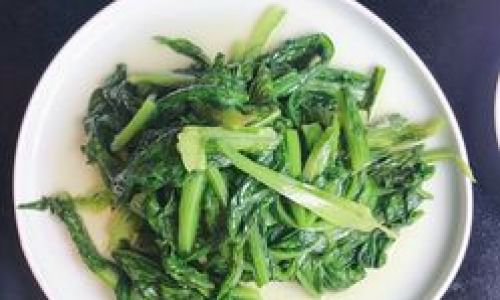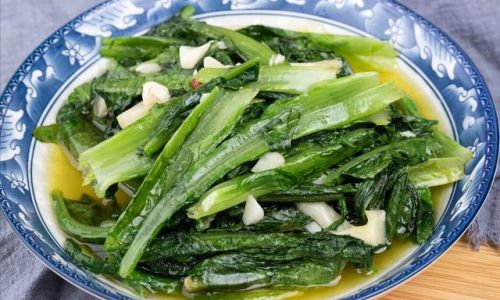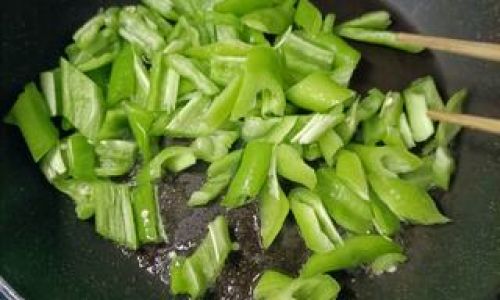Stir-fried Chinese lettuce, known as baocai or youmaicai in Mandarin, is a dish that embodies the essence of Chinese home cooking—simplicity, balance, and respect for fresh ingredients. Often overlooked in favor of more elaborate dishes, this humble vegetable preparation is a testament to the idea that true culinary mastery lies in elevating the ordinary to the extraordinary. In this article, we explore the history, techniques, and cultural significance of stir-fried Chinese lettuce, diving into its role in Chinese cuisine and its growing popularity worldwide.
A Brief History of Chinese Lettuce
Chinese lettuce (Lactuca sativa var. asparagina) is a leafy green vegetable native to the Mediterranean region but has been cultivated in China for over 1,500 years. Unlike its Western counterpart, romaine lettuce, Chinese lettuce has a slender shape, crisp texture, and a subtle bitterness that mellows when cooked. Its cultivation spread across Asia through the Silk Road, becoming a staple in kitchens from Beijing to Guangzhou.

In traditional Chinese medicine, Chinese lettuce is prized for its cooling properties, believed to balance “heat” in the body. This belief has cemented its place on dining tables, especially during warmer months. The vegetable’s adaptability to various cooking methods—stir-frying, blanching, or braising—made it a versatile ingredient in peasant and imperial kitchens alike.
The Philosophy Behind Stir-Frying
Stir-frying, or chao in Mandarin, is more than a cooking technique—it is a philosophy. Rooted in the principles of yin and yang, stir-frying seeks to harmonize flavors, textures, and temperatures. High heat, quick cooking, and minimal oil preserve the vegetable’s vibrant color, crunch, and nutritional value. The goal is to achieve wok hei, or “the breath of the wok,” a smoky aroma imparted by the intense heat of the cooking vessel.
For stir-fried Chinese lettuce, this method ensures the leaves retain their structure while absorbing the flavors of aromatics like garlic, ginger, and chili. The result is a dish that is both comforting and invigorating, a delicate dance between fire and freshness.
Ingredients: Simplicity as a Virtue
The beauty of stir-fried Chinese lettuce lies in its minimalist ingredient list. Each component plays a crucial role:
- Chinese Lettuce: Select crisp, bright green leaves with no wilting. Younger leaves are tender, while older ones offer a robust bite.
- Aromatics: Garlic, sliced or minced, forms the flavor backbone. Ginger or shallots can be added for depth.
- Chili: Fresh or dried chili flakes provide a gentle heat, optional but traditional.
- Oil: Peanut or vegetable oil with a high smoke point ensures even cooking.
- Sauces: A splash of soy sauce, oyster sauce, or a pinch of salt enhances umami without overpowering.
- Optional Additions: Fermented black beans, Shaoxing wine, or a drizzle of sesame oil elevate complexity.
Preparation: The Devil is in the Details
Preparing Chinese lettuce requires precision. Begin by washing the leaves thoroughly under cold water to remove dirt. Pat dry with a clean towel—excess moisture will steam the vegetables instead of stir-frying them. Trim the stems if tough, then chop the leaves into 2-inch segments. Separate the stems from the leaves if cooking in batches; stems require slightly longer cooking.
Aromatics should be prepped meticulously. Mince garlic evenly to ensure even cooking. Chilies can be deseeded for milder heat or left intact for intensity. Have all ingredients within arm’s reach—stir-frying is a rapid process that allows no time for mid-cooking adjustments.
The Cooking Process: Fire and Timing
- Heat the Wok: Place the wok over high heat until it smokes lightly. Add oil and swirl to coat the surface.
- Aromatics First: Toss in garlic and chili, stirring constantly for 10–15 seconds until fragrant. Avoid burning, which imparts bitterness.
- Stems First (if applicable): Add stem segments and stir-fry for 30 seconds before adding leaves.
- Leaves and Seasoning: Toss in the leaves, using a spatula to fold them into the aromatics. Drizzle soy sauce or oyster sauce along the wok’s edges to caramelize slightly.
- Finish Quickly: Cook for 1–2 minutes until leaves wilt but retain their vibrant green hue. Overcooking turns them mushy and dull.
- Serve Immediately: Transfer to a plate to halt cooking. Garnish with sesame seeds or a sprinkle of white pepper.
Variations Across Regions
China’s culinary diversity shines in regional interpretations of stir-fried Chinese lettuce:
- Sichuan Style: Fermented broad bean paste (doubanjiang) and Sichuan peppercorns add fiery, numbing heat.
- Cantonese Approach: A light touch with oyster sauce and a dash of sugar balances bitterness.
- Shanghainese Twist: A splash of Shaoxing wine and a pinch of MSG (though traditionally avoided) deepens flavor.
- Vegetarian Adaptations: Replace oyster sauce with mushroom-based seasonings for a plant-based version.
Cultural Significance
In Chinese households, stir-fried Chinese lettuce is more than a side dish—it is a symbol of abundance and health. Served during festivals like Lunar New Year, its green hue represents prosperity, while its crisp texture signifies longevity. The dish also reflects Confucian ideals of moderation, where humility in preparation allows natural flavors to shine.

Health Benefits: Nutrition in Every Bite
Chinese lettuce is a nutritional powerhouse:
- Rich in Vitamins: High in vitamin A, C, and K, it supports immune function and bone health.
- Hydration: With 95% water content, it aids digestion and skin health.
- Low in Calories: A 100g serving contains just 15 calories, making it ideal for weight management.
- Antioxidants: Flavonoids like quercetin combat inflammation.
Common Mistakes and How to Avoid Them
- Overcrowding the Wok: Cook in batches if necessary to prevent steaming.
- Insufficient Heat: A lukewarm wok results in soggy leaves. Ensure the wok is smoking hot.
- Overseasoning: Let the vegetable’s natural flavor dominate; use sauces sparingly.
- Ignoring Stem Texture: Stems and leaves cook at different rates—separate them for even results.
Pairing Suggestions
Stir-fried Chinese lettuce complements a range of dishes:
- Proteins: Pair with stir-fried beef, tofu, or shrimp for a balanced meal.
- Rice: Its mild bitterness cuts through the richness of fried rice.
- Noodles: Toss with lo mein or chow mein for added texture.
- Soups: Add a handful to hot pot or egg drop soup for freshness.
Modern Adaptations
As Chinese cuisine globalizes, chefs and home cooks experiment with bold twists:
- Fusion Flavors: Add miso, kimchi, or gochujang for a Korean-inspired kick.
- Crispy Texture: Deep-fry leaves briefly for a chip-like garnish.
- Vegan Upgrades: Use nutritional yeast for a cheesy umami boost.
The Sustainability Angle
Chinese lettuce’s rapid growth cycle (30–45 days) makes it an eco-friendly choice. Its resilience to pests reduces pesticide use, aligning with sustainable farming practices. Growing it in home gardens or container pots further minimizes carbon footprints.
Conclusion: A Dish That Transcends Borders
Stir-fried Chinese lettuce is a microcosm of Chinese culinary wisdom—a dish that honors tradition while embracing innovation. Its humility belies its complexity, a reminder that greatness often lies in simplicity. Whether enjoyed in a bustling Beijing night market or a suburban kitchen, this dish connects us to centuries of heritage and the timeless joy of sharing a meal.
As you wield your wok, remember that cooking is not merely a chore but a conversation between past and present. With each flick of the wrist, you honor the farmers who cultivated this green, the cooks who refined its preparation, and the diners who will savor its crisp, vibrant essence. So next time you stand before a stove, let the sizzle of garlic and the whisper of smoke guide you—and let the lettuce speak for itself.





0 comments